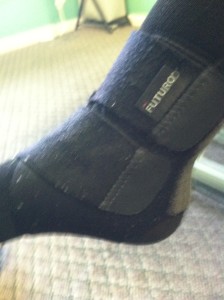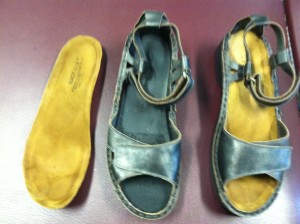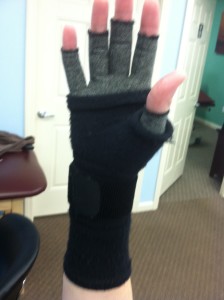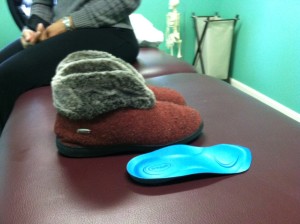A Group of Zebras is Called a Dazzle…
Muldowney Physical Therapy wishes all of you zebras a dazzling day.
My name is Kevin Muldowney and I am the owner of Muldowney Physical Therapy. My practice is committed to helping people with Ehlers-Danlos Syndrome live a better life. This page was designed to give a person with EDS information on how to improve their quality of life. On this page you will find my two webinars, one entitled, “Physical Therapy Protocol for Ehlers-Danlos Syndrome,” which goes over what is going on in your body as a person with EDS and how PT can help you. My second webinar entitled, “SI Joint Dysfunction for the Person With EDS,” will go over the SI joint and how we treat the SI joint specifically for a person with Ehlers-Danlos Syndrome. This page will also give you a brief definition of what Ehlers-Danlos Syndrome is as well as a healthcare team in which you need to develop in order to help your many issues. I have also put together for you four videos which answer specific questions that have come up by my patients with EDS in my clinic. This page also has some pictures of different types of braces and shoes that have been helpful to my patients over the years. These braces are not custom and you do not need a prescription to purchase them. Most of them can be purchased at CVS. After you have gone through this page, I also strongly suggest that you go to my Body Mechanics Page where I have set up both videos and audios on different activities of daily living and how to perform them without injuring your back. If you would like to learn more about my practice, please click on, “Muldowney Physical Therapy is One of the Leaders in Treating Ehlers-Danlos Syndrome.” If you are looking to learn more about my book, “Living Life To The Fullest With Ehlers-Danlos Syndrome,” please click onto the web page with the same title. I hope this web page is both helpful and informative to you. Thank you.
• To purchase this book, click here.
• If you have already purchased “Living Life to the Fullest with Ehlers-Danlos Syndrome,” and have questions regarding this physical therapy protocol, click here.
• Click here to listen to Kevin’s webinar in SIJ dysfunction.
• Click below to here Kevin’s webinar about physical therapy protocol for people with eds.
(Video is only view-able on desktop, not on Iphones/Ipads) Click here to hear Kevin’s webinar on SIJ Dysfunction.
EDS Definition:
Ehlers-Danlos Syndrome was first named in 1933 after doctor Chernogubov Edvard Ehlers and doctor Henri-Alexandre Danlos. Both defined characteristics of EDS as a patient presenting with joint laxity, skin hyperextensibility and a tendency to bruise. EDS is a connective tissue disorder which affects collagen in the body. Collagen is the glue that supports many structures in the body including: skin, ligaments, muscles, viscera and blood vessels. If you think you may have EDS, you may have your doctor or physical therapist first perform a Beighton test on you, which measures hypermobility. A score of five or greater is positive for hypermobility and suggests that you should be referred to a geneticist who will determine whether or not you have EDS.
EDS Healthcare Team:
EDS affects many structures in the body. Therefore, there is no one doctor who can treat the numerous issues that can affect a person with EDS. This can be frustrating for most people with EDS. You need to develop a team of healthcare professionals who specialize in treating specific issues related to EDS. Below is a list of a few healthcare professionals who may be on your team. This is not a complete list. You should discuss with your primary care physician who is appropriate for you to have on your team.
- Primary Care Physician: This doctor coordinates all other doctors on your team.
- Pain Doctor: This doctor treats pain and inflammation.
- Orthotist: This person develops braces for your joints.
- Cardiologist: This doctor treats POTS, vascular EDS and heart contractility problems.
- Neurosurgeon: This doctor treats tethered cord, Chiari Malformation, cranial instability and syringomyelia.
- Gastroenterologist: This doctor treats leaky gut, gastroparesis and food allergies.
- Pulmonologist: This doctor treats COPD and other breathing issues.
- Speech Pathologist: This person treats swallowing problems.
- Occupational Therapist: This person provides adaptive equipment to assist you with activities of daily living.
- Physical Therapist: This person decreases subluxations/dislocations of your joints.
Do I have to begin with the sacroiliac joint protocol even though my neck hurts?
Yes! This is difficult to understand, but the sacroiliac joint is considered to be the keystone of the body. This means that if there is a problem with this joint, it will affect the joints above it (low back, mid back, neck, head, shoulders, wrists and hands) and below it (hips, knees, ankles and feet). You should never work on any body part before the sacroiliac joint is stabilized using my exercise protocol. If a physical therapist works on your mid back before your sacroiliac joint is properly aligned, soon after your mid back is fixed, it will be twisted again, causing your pain to return. The reason for this is, that if your sacroiliac joint is not aligned, when you stand up, you will have a scoliotic curve in your spine. This is referred to as an “apparent scoliosis” and is caused by your body’s compensation of the mal-aligned sacroiliac joint below. Until the sacroiliac joint is corrected, this apparent scoliosis will continue to exist. It is the apparent scoliosis which is the major cause of neck pain in most people with EDS. Until the apparent scoliosis is corrected, the neck will continue to have pain. Think of your body as a house. The sacrum and pelvis are the foundation of this house. Your mid back represents the walls of the house and your head and neck are the roof. Your neck can never be aligned as long as your foundation (sacrum and pelvis) is crooked. For those of you who have had treatment for neck and mid back pain and are not getting better, it is probably because the physical therapist did not fix your sacroiliac joint and low back first. Once they address your sacroiliac joint and low back per my protocol in Chapter Two of my book, then you can follow my Neck, Mid Back and Upper Extremity Protocol in Chapter Three to help your mid back pain. After this is completed, Chapter Four outlines exercises for the hips, knees, ankles and feet. By the end of the book, every joint will be stabilized due to these exercises. Click here to listen to my webinar entitled, “Sacroiliac Dysfunction in the EDS Population.”
No Running or Jumping
I would like to discuss why people with EDS should never run or jump. When you run or jump, the ground places an upward force on your hips, knees, ankles, feet and pelvis, which is equal to five to ten times your body weight. This force is called a ground reaction force and occurs every time you jump and your foot hits the ground. This excessive force can easily sublux your ankle, knee, hip or pelvis. More than likely, it will cause an SI joint dysfunction called an upslip. An example of a ground reaction force is: if a 100 pound person goes running, every step they take, the ground pushes up on the person’s leg and pelvis with a force between 500 and 1,000 pounds. This large amount of force is extremely difficult for your ligamentous system to absorb. I suggest to my patients with EDS, to either do pool exercises or ride a recumbent bike in order to get their cardiovascular exercise.
Click the play button below to hear from Kevin Muldowney
SIJ Belt In EDS and Long Car Rides
Many of my patients with EDS have difficulty riding in a car for long distances. This is because, most car seats are bucketed, which causes them to slump. When you sit in a slumped posture for a prolonged period of time, you will have a tendency to sublux your sacrum. The ball exercises in my protocol will help you be able to sit in a car for a longer time without pain. I do however suggest to my patients, that if they are riding in a car for distances longer than twenty to thirty minutes, they should wear an SI joint belt. This will give them some external support to their SI joint during the long car ride and hopefully avoid them subluxing their sacrum during this trip.
Click the play button below to hear from Kevin Muldowney
Body Mechanics
I would like to talk to you today about proper body mechanics, which is how you move your body around during your daily activities. You have EDS, which means your ligaments are weak. Ligaments hold your joints together and have an inherent strength to them. If you place a force on a joint that exceeds both the strength of your ligaments and muscles, the joint will go out of place, which is called a subluxation. Using proper body mechanics for such activities as lifting, walking and doing laundry will decrease the force you place on your joints while performing these activities, thus help preventing these joints from going out of place. Go to my web page which is entitled, “Body Mechanics” to see pictures and videos of how to properly perform many daily activities.
Click the play button below to hear from Kevin Muldowney
Carry Groceries In From Car For EDS Patients
I would like to talk to all my patients with EDS about how to carry grocery bags in from your car. When you carry grocery bags in from your car, what you do not want to do is place all the grocery bags in one hand. When you place all the groceries in one hand, you have a tendency to lean your back toward that side. This will cause increased low back pain, neck pain and shoulder pain. Instead, what you want to do is pick up the groceries with both hands and evenly distribute the weight among both arms. This will protect your back, neck and shoulders while you are carrying them in. If you have a problem with your wrists and hands, then you can loop the straps of the bags around your forearms and carry the grocery bags in with bent elbows. This will allow you to carry the groceries in while protecting your wrists and hands. Remember, no matter what method you use to carry the groceries in from the car, always remember to use a proper amount of weight not to stress your joints out.
Custom Orthotics in EDS population
I would like to discuss why it is so important for people with EDS to wear custom orthotics. Most people with EDS have flat feet and a custom orthotic is designed to control the arch in your foot so your foot is not flat while you are wearing them. When your foot is flat, it affects not only your ankle, but also your knee and your hip. People with EDS who have a flat foot have a tendency to sublux their ankle, causing pain in the front part of their ankle joint. Also, when your foot is flat, it will bend your knee inward which is called valgus, causing increased pain on the inside part of your knee and may also contribute to having your patella sublux. Finally, flat feet can also rotate your hip inward, causing bursitis in your hip which causes pain on the outside part of your hip every time you take a step. Therefore, proper fitting of a custom orthotic can reduce not only your foot and ankle pain, but also will reduce your knee and hip pain as well. Most of my patients with EDS require at least three adjustments to their custom orthotics in order to fit them properly. I understand that custom orthotics are expensive, but trust me, they are worth the price.
Find a local eds support group near you: EDSAwareness.com
Go to Kevin’s webinar: Click Here
Like Kevin’s Facebook Page
Each week, Kevin will be posting different issues that may affect people with EDS. All issues discussed will be functionally related and have a rationale with explanation.






